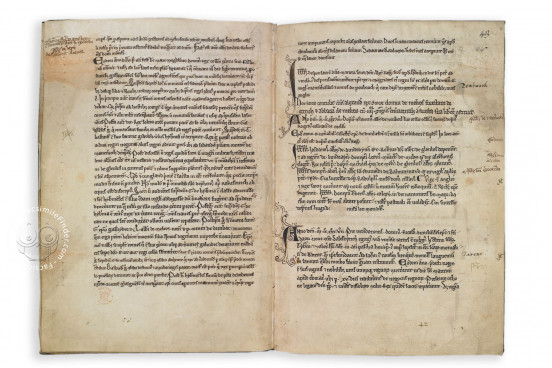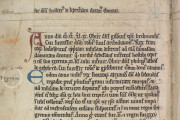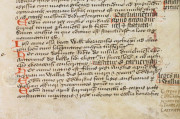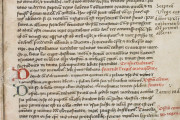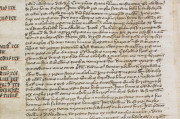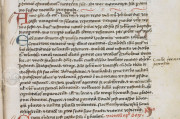The Chronicle of Melrose Abbey documents the history of Melrose Abbey, a royal Cistercian foundation in southern Scotland. The manuscript itself was created in 1140 and was updated regularly with contemporaneous reports until 1270. Entries prior to 1140 are compiled from other historical documents. The entire chronicle is written in Latin in early Gothic formal bookhands and less formal secretarial scripts. Each entry is dated in relation to the Calends (the first) or the Ides (the fifteenth) day of the month. Numerous entries were added in the margins throughout.
The chronicle was created as a single tome at Melrose Abbey and remained there until the fourteenth century when it was taken to Deeping Priory in Lincolnshire. It was later divided with the earliest entries detached from the main body, which are now in the Julius B manuscript. The contemporary historical records from 1140 to 1270 remained together in the Faustina B volume. The chronicle remains an important historical record from Scotland from the high Middle Ages.
History from the Scottish Perspective
Although the full chronicle spans 1,270 years, it is the entries from 1140, the founding of Melrose Abbey, to 1270, the final record, that are written by the contemporary witnesses to the events transcribed. Entries record events such as the total solar eclipse of 1 May 1185 and the sealing of the Magna Carta in 1215.
This manuscript serves as the sole original copy of the record of Melrose Abbey, which was established by the Scottish king David I and served as the chief house of the Cistercian Order in the country.
A Chronicle That Showcases the Development of Gothic Script
A functional book, the Chronicle of Melrose Abbey was never illustrated. Its modest textual decoration is minimal and preserves several individual Gothic hands spanning several generations of scribes as well as dozens of marginal notes dating over five centuries.
Generally written over forty long lines, the various scripts range from more formal Gothic textura to cursive Anglicana and Secretary. The few decorative elements evolve accordingly—from a simple rubricated Puzzle initial to a few pages of pen-flourished initials to alternating blue and red initials. Occasional rubrication throughout has a functional rather than decorative quality.
A Tale from Two Manuscripts
The Chronicle of Melrose Abbey, when combined with the dissociate folios in Cotton MS Julius B XIII, begins with Year 1. The early section of the main text through 1140 is a compilation of various historical texts. The entries from 1140 to 1270, however, are the principal account of the immediate and recent history known to the monks of Melrose.
After the Dissolution, the single codex came into the possession of John Leland, who separated the chronicle. Both sections were acquired by Robert Cotton by 1621 and bound with other works and were later bequeathed to the public in 1702.
Binding description
Binding
British Museum in-house binding from November 1864. Quarter-leather brown spine with black covers.
We have 1 facsimile edition of the manuscript "Chronicle of Melrose Abbey": The Chronicle of Melrose facsimile edition, published by Lund Humphries, 1936
Request Info / Price
